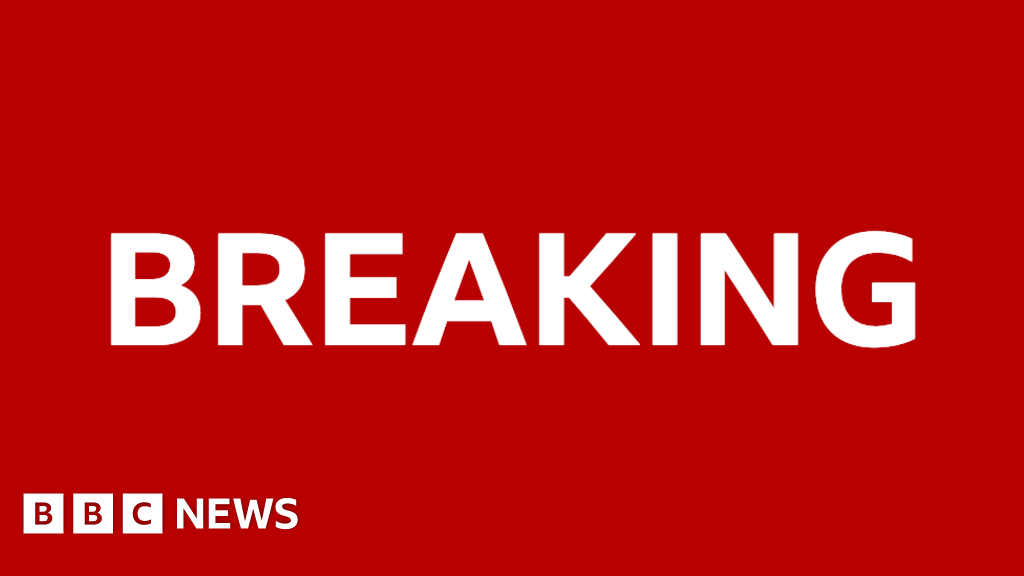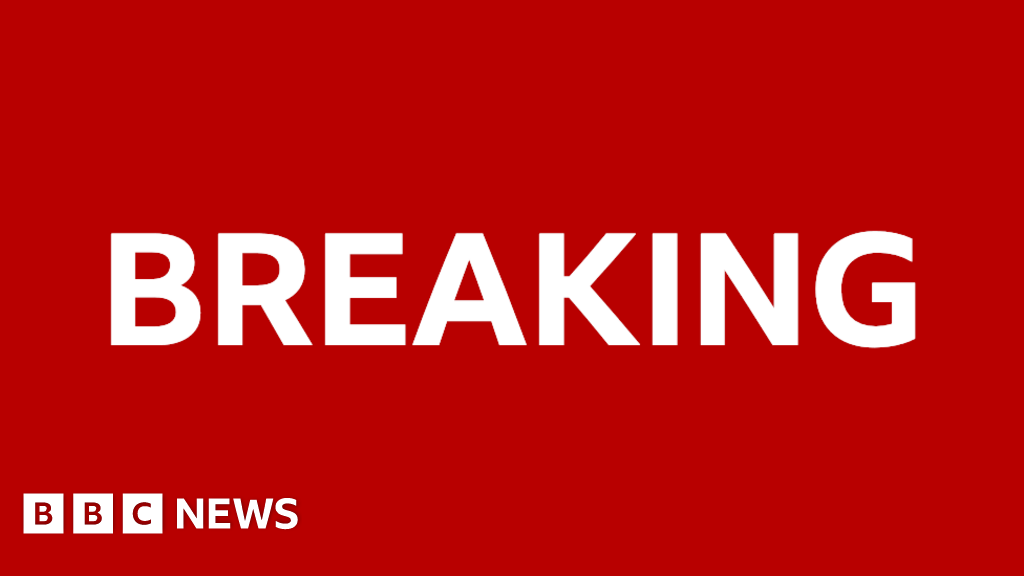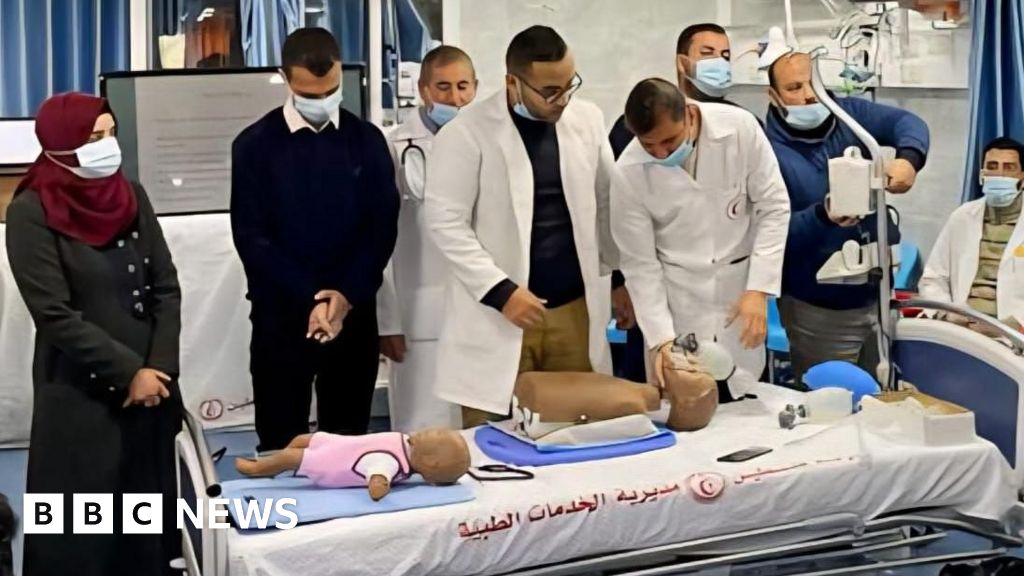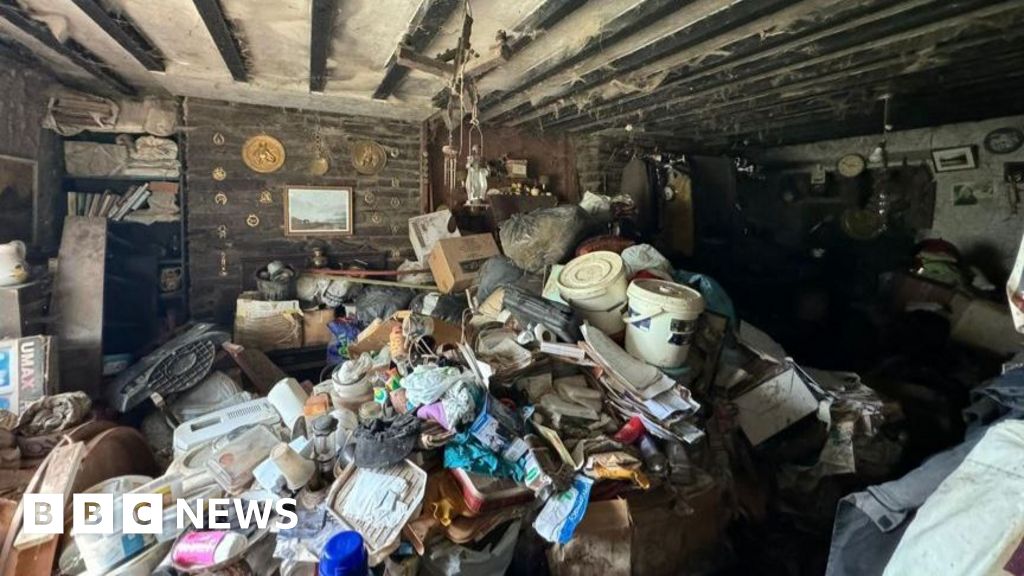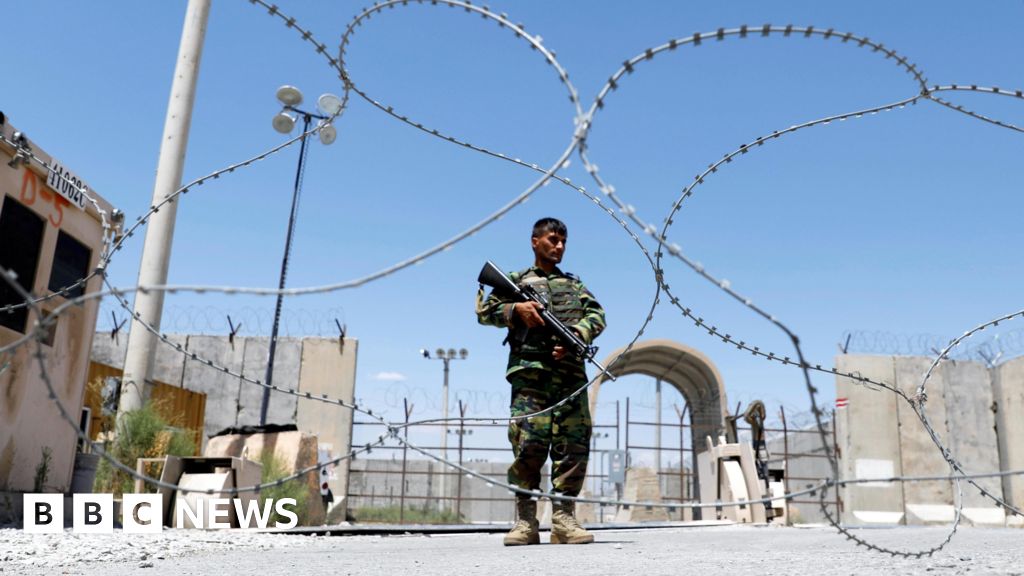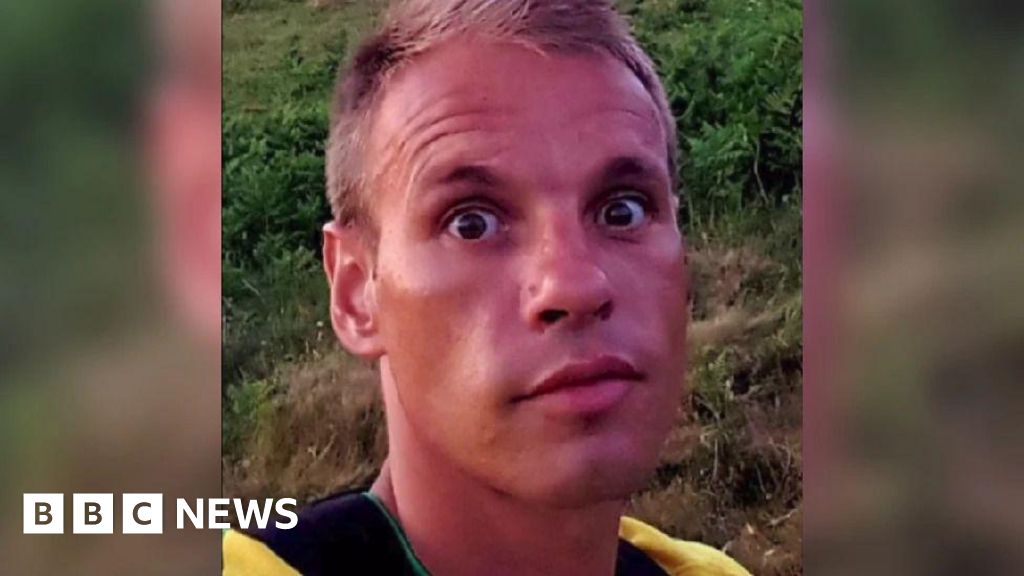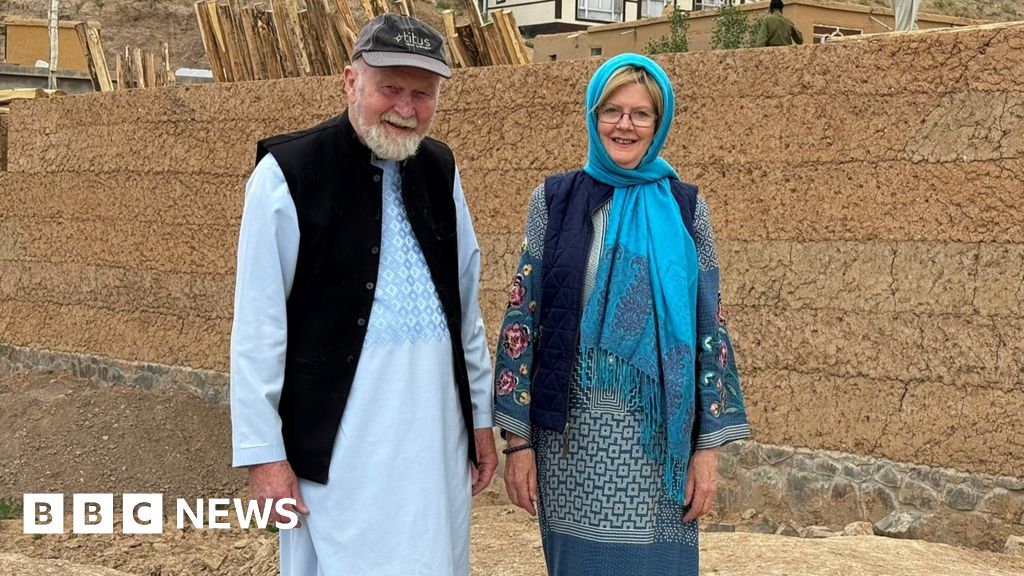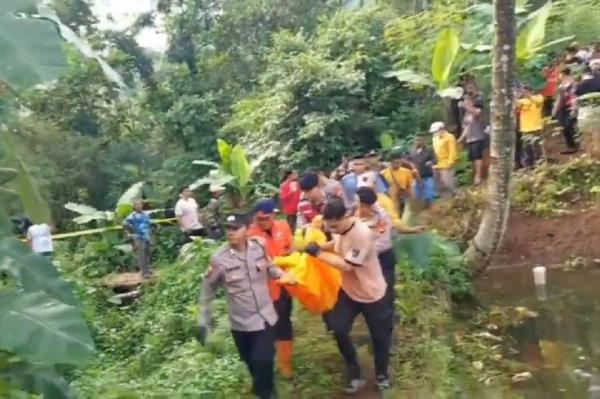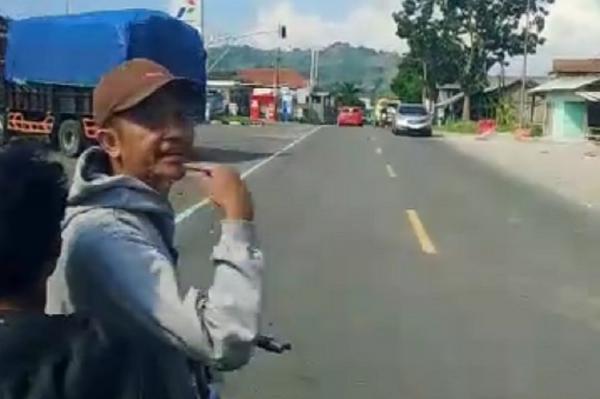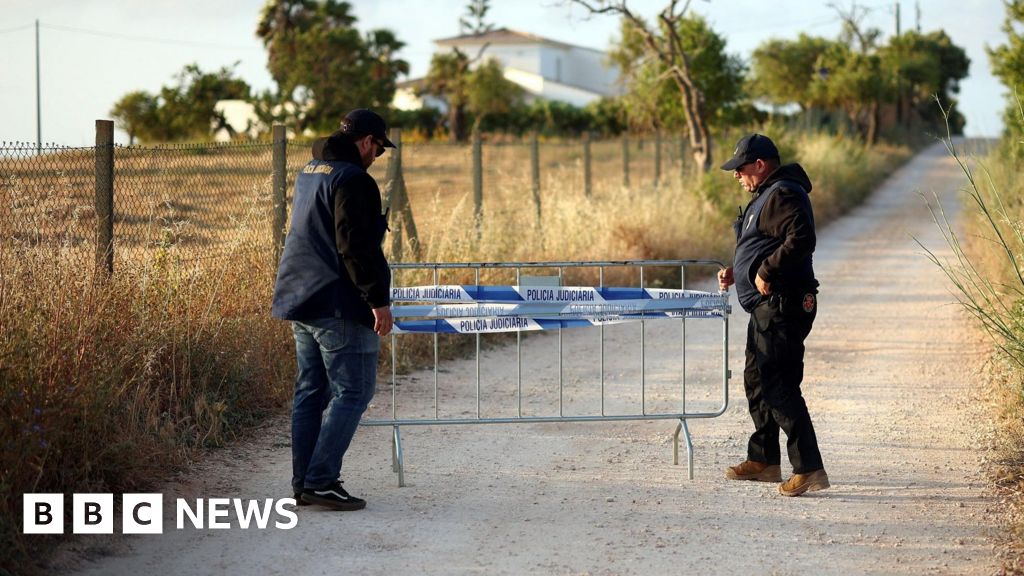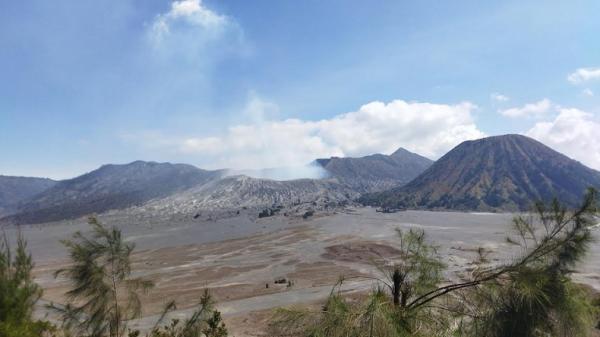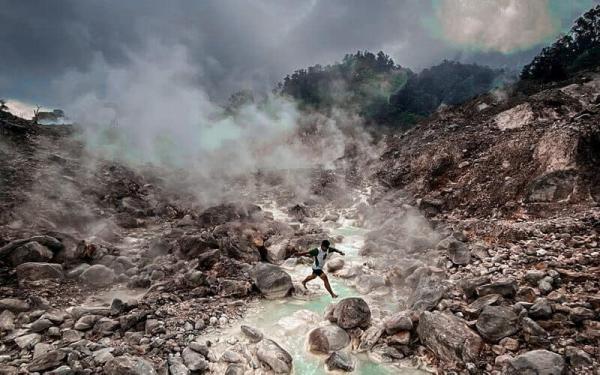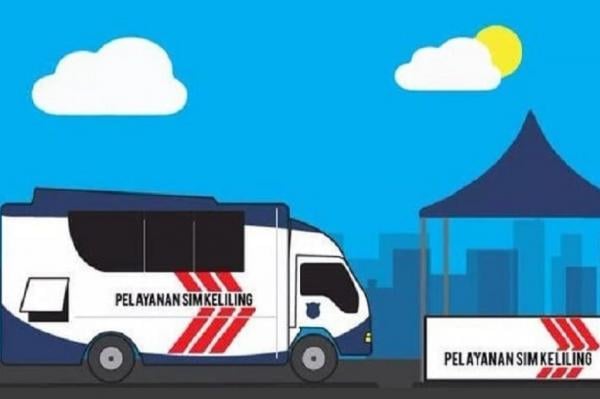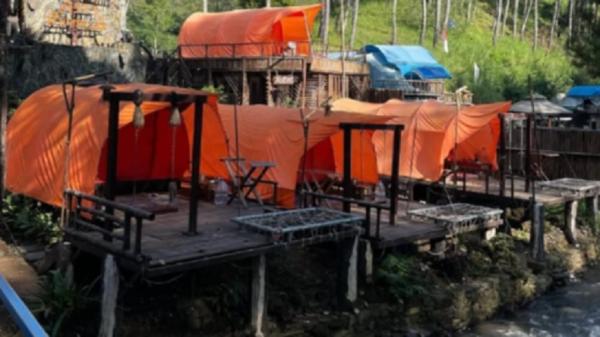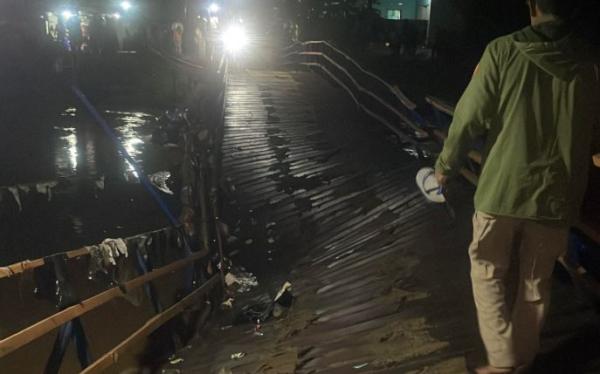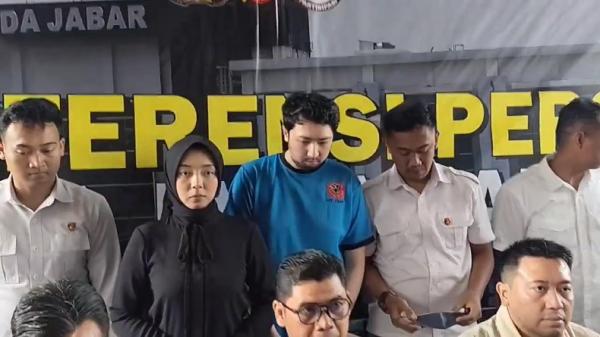Daniel García Marco y Leire Ventas
BBC Mundo
Reporting fromEl Paso, Texas

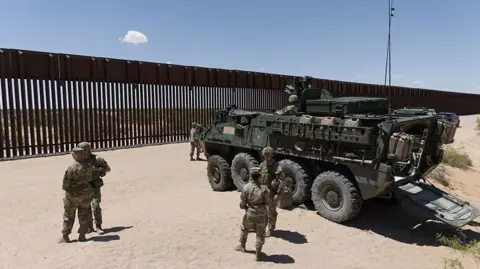 Getty Images
Getty Images
In the heart of the Texas desert, a Stryker is parked near a stretch of border wall. The light but powerful eight-wheeled combat vehicle was used in the Iraq and Afghanistan wars – and now is being used to stop what US President Donald Trump has called an "invasion" at the US-Mexico border.
The Stryker is just one of about 100 such vehicles being used along the 3,100 km border. In addition, it is estimated there are over 8,000 soldiers, as well as spy planes and drones, and two Navy ships monitoring the coast.
A few kilometres away on the Mexican side of the border, a young man standing on top of a hill is one of the few signs of this so-called "invasion". He is what Border Patrol agents call a "hawk," the ones who monitor and decide when and where to encourage migrants to cross into the United States.
But those crossings – not long ago at an all time high – have slowed to a trickle. The declining numbers have raised questions about Trump's border tactics, which include an unprecedented deployment of American military might.

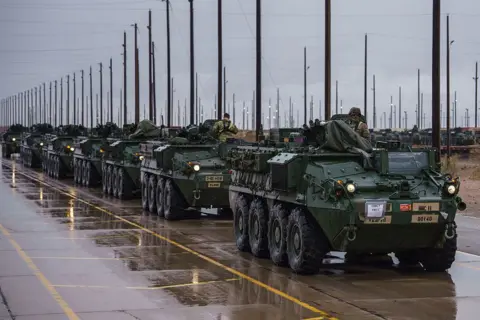 Getty Images
Getty Images
The military has deployed about 100 Strykers that were used in the Afghanistan and Iraq wars to the border
A legal loophole
Trump has been accused of bypassing the conventional distinction between the armed forces and domestic police by deploying the military to the border.
In the US, the Posse Comitatus Act prevents federal armed forces from participating in law enforcement activities unless Congress has expressly authorized it.
However, the military is allowed to patrol its own bases and arrest trespassers through what is known as the "military purpose doctrine".
Between April 18 and May 1, the Pentagon created two National Defense Areas, both bordering the Mexican state of Chihuahua, and made them de facto parts of existing military bases.
What this has done, says Elizabeth Goitein, senior director of the left-leaning Brennan Center for Justice's Liberty & National Security Program, is allow the military to patrol huge swaths of the border.
Migrants caught crossing into these areas would be considered trespassers and may be temporarily detained by US soldiers until Border Patrol agents arrive.
"It's exactly what the administration is trying to set up here: to turn up to a third of the southern border into a military installation," she told BBC Mundo. "When someone enters the area and is detained, they can argue that the primary reason for doing so is to protect the base."
The military command insists that its mission is to detain and alert border agents so they can make the official arrest - not to do domestic police work.
The Trump administration argues the expanded military areas are necessary for national security, and points to its decisive election victory as a mandate. Stronger border security was a key Trump campaign promise and one of the biggest issues for voters.
White House Press Secretary Karoline Leavitt says the new areas "will enhance our ability to detect, interdict and prosecute the illegal aliens, criminal gangs, and terrorists who were able to invade our country".
"It will also bolster our defenses against fentanyl and other dangerous narcotics that have been poisoning our communities," she added.

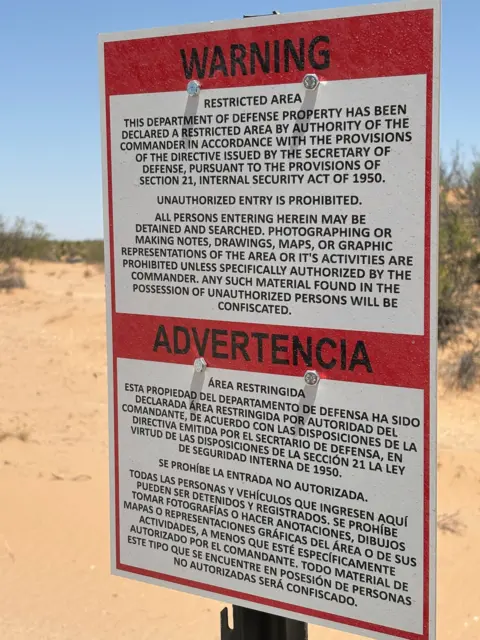 Daniel García Marco / BBC Mundo
Daniel García Marco / BBC Mundo
About 1,700 signs have been placed around the new National Defense Areas warning migrants against trespassing
95% isn't good enough
Ms Goitein questions how the expansion of the military is justified, given the numbers of crossings at the border have fallen to historic lows. While numbers began falling before Trump took office, the decline has accelerated since January, as the administration has ramped up its efforts to arrest and deport illegal migrants.
In April, more than 8,000 people were detained for illegally entering the country at the southwest border.
A year ago, the number was 128,000 in April - a 94 % drop - according to government statistics.
Brigadier General Jeremy Winters, who is in charge of coordinating the efforts of different law enforcement agencies along the southern border, has said even one illegal crossing is too many.
"Containment is at 95%. But 95% is not 100%," he said during a press conference.
"For us to accept that 95% is good enough would be to say that it's conceptually okay to break the law. And that's not what we're doing here."
The creation of these national defense areas has had a direct effect on arrests, statistics show. As of 3 June, the Joint Task Force on the Southern Border has detected approximately 340 migrant in these militerised zones.
To the common charge of entering the United States illegally, prosecutors now can add the charge of intentionally violating security regulations in the areas now declared restricted.
While both are classified as misdemeanors, the penalties for violating security regulations are much steeper. While entering the country without permission through a location not designated as a port of entry carries a maximum sentence of six months in prison and a fine of up to US$5,000, the second charge increases the possible penalties to up to one year in prison and a fine of US$100,000.
"This is pure wilderness, a desert" Carlos Ibarra, the public defender for several of the detainees, told BBC Mundo. "(The migrants) continue arriving as usual, but suddenly, they face military charges. And they don't understand anything."
Some of those additional charges were dismissed, with a New Mexico judge finding that military signs were not clearly marked or could be missed. But many have been convicted and pleaded guilty.
Meanwhile, the militarisation of the border will continue.
Trump even recently said that he pressured Mexican President Claudia Sheinbaum to allow the Army to cross into the neighbouring country to conduct operations against cartels, something the president flatly rejected.
For now, the troops remain on the US side of the border.
"This is their primary mission. This is not training. This is an operation to seal and protect our border, our own homeland," Brigadier General Winters said.
.png)
 3 months ago
38
3 months ago
38
